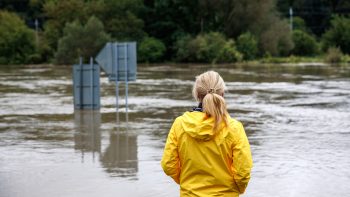
From historic floods in the Midwest to record-breaking heatwaves in the South, extreme weather events are no longer rare — they’re becoming part of everyday life.
In 2025, the U.S. is seeing more climate-related disasters than ever before. And it’s not just an environmental issue anymore — it’s affecting our homes, health, finances, and daily routines.
So what’s going on, and more importantly, how can everyday people protect themselves, their families, and their communities?
Extreme Weather by the Numbers
You don’t have to be a meteorologist to notice something’s off. Here’s what experts are seeing:
- The U.S. has already experienced billion-dollar weather disasters in the first half of 2025, according to NOAA.
- Average summer temperatures are 2 to 4 degrees higher than they were just two decades ago.
- Hurricanes, wildfires, droughts, and flash floods are happening more frequently — and more intensely.
In short: the weather is no longer easily predictable. It’s powerful, disruptive, and, increasingly, personal.
How It Affects Daily Life
Climate change isn’t just a headline — it’s showing up in ways you can feel:
- Soaring utility bills as more people crank up the A/C during heatwaves
- Flooded basements and damaged roofs from unpredictable storms
- Power outages that last for hours — or days
- Canceled flights, delayed deliveries, and grocery shortages due to weather-related disruptions
- Health risks like heat stroke, asthma flare-ups, and water contamination
Whether you rent an apartment or own a home, live in a city or a small town, the impact is real.
What You Can Do About It
The big picture may feel overwhelming, but there are practical steps individuals can take to stay safer and more prepared.
1. Create an Emergency Kit
Every household should have a basic supply kit that includes:
- Flashlights and extra batteries
- Bottled water and non-perishable food (enough for 3 days)
- First-aid supplies and medications
- Phone chargers and a battery-powered radio
- Copies of important documents in a waterproof bag
Bonus tip: Keep a smaller “go bag” in your car.
2. Know Your Local Risks
Is your area prone to wildfires, hurricanes, or flash floods? Learn the risks specific to your region and sign up for local emergency alerts.
Check your flood zone status at FEMA.gov and review your homeowner or renter’s insurance to make sure you’re covered.
3. Weather-Proof Your Home
Even small upgrades can make a big difference:
- Clean gutters and storm drains regularly
- Trim trees to prevent damage during high winds
- Use weather stripping and insulation to keep cooling costs down
- Install surge protectors for major electronics
If you own your home, consider long-term upgrades like impact windows, sump pumps, or even solar panels with battery backups.
4. Have a Plan — and Practice It
Make sure every member of your household knows:
- Where to meet if you get separated
- How to shut off water, gas, and electricity
- Who to contact in an emergency
Rehearse your plan like a fire drill — it could save valuable time when it matters most.
5. Get Involved in Local Preparedness
Many towns now have climate resilience committees, emergency volunteer networks, and community cooling or charging centers.
Being involved not only helps your neighbors — it puts you first in line for important updates and resources.
Is This the New Normal?
Experts say yes — but that doesn’t mean we’re powerless.
While global solutions require governments and industries to act, individual awareness and preparation do make a difference. Every smart move helps you adapt to a changing world — and may inspire others to do the same.
Prepare, Don’t Panic
Extreme weather may be here to stay, but fear doesn’t have to rule your life. Knowledge is power, and preparation is peace of mind.
You don’t need to build a bunker — just take small steps now to stay safer, cooler, drier, and more in control when the next big storm hits.
By Admin –